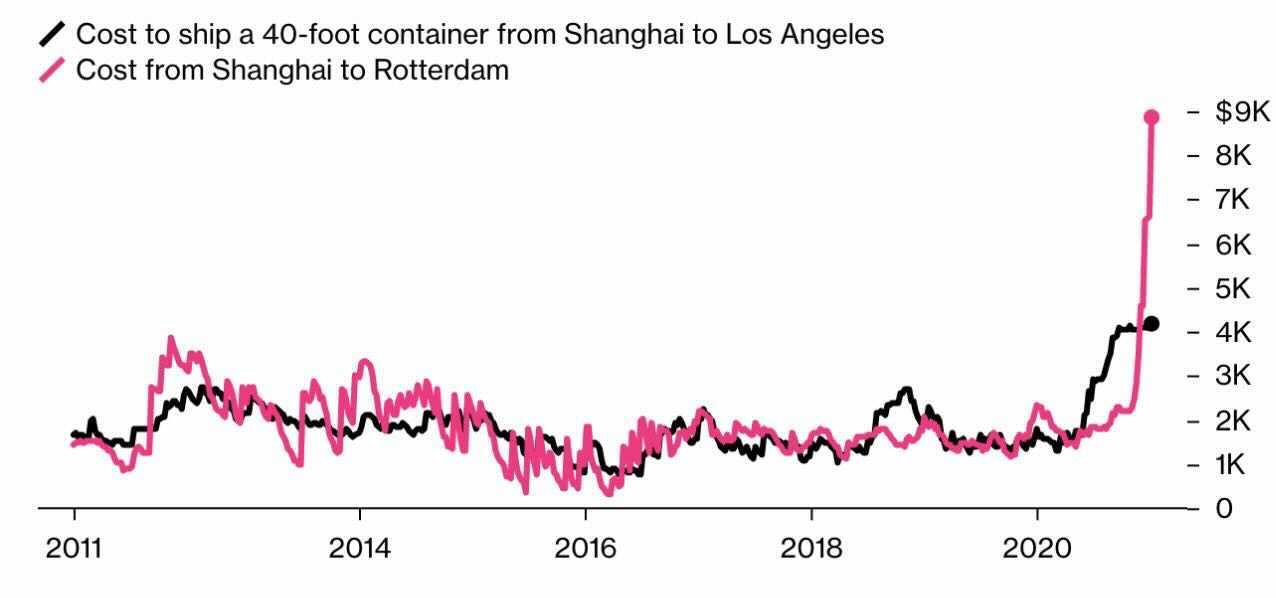Every client of ours that imports product has mentioned the effects of the container shortage, but data has been recently released that shows the true spread between supply and demand of containers.
A nice explanation from the Flexport CEO is that US IMPORTS grew by 20% and US EXPORTS dropped by 20%, thus a container shortage in China.
US exports declined 20% while imports went up 20%. No exports means no empty containers in China.
— Ryan Petersen (@typesfast) January 19, 2021
Ryan Also mentioned:
Normally 66% of all containers going back to Asia are empty. Today it’s 80%.
The numbers don’t lie.

Many have seen their container import costs double and sometimes triple in Q42020 and into 2021.
The simplest explanation is probably the most accurate, COVID has completely changed buying patterns and Americans are spending much more time inside their homes, cooking more at home, working out more at home, playing more games at home, and this all rolls up to a supply-chain and materials.
These patterns always have upstream effects!
Today we’re stats like this:
37% of all containers are rolled over
(“Rolled Over” is synonymous with getting pulled from your flight due to airline overbooking your seat).
One obvious real-world example is that Commercial Gyms were mostly closed for the duration of 2020 and people starting to create their own At-Home Gyms, up-ending traditional supply & demand:
- Huge shortages of Weights and Racks
- Huge explosion of Yoga Pants (thanks #TikTok)
- People converting their garages, buying floor mats and power towers
- Lots of M&A in Smart Gyms, Apple Fitness Upgrades, and simply more demand of Flatscreen TVs for workout videos!
Google Trends shows fantastic data as well, with 10+ years of normal search traffic and an explosion of traffic in 2020.
What Do These Changes Mean For Your Amazon Business?
Unfortunately for VendorCentral suppliers, Amazon has not yet acknowledged these surging prices, nor have they been broadly accepting price increases to help push these prices down to the customer.
We know that manufacturers and importers cannot eat the costs, because they barely have enough margins to begin with. But you cannot do nothing.
The corollary is that SellerCentral suppliers already have the flexibility to change their retail pricing and that flexibility is the real benefit/value of working through SellerCentral and continuing to prosper.
For Brands that import their goods, a hybrid approach to Amazon has been a strategic edge, but with immediate supply-chain constraints disrupting your cost-basis, A hybrid approach is going to be the standard.
Domestic manufacturers should be able to continue as normal!
Finding More questions than Answers? Need More Help?
If you are finding yourself unsure and need some advice on next steps, Schedule a phone call with us and we would be happy to speak with you and provide actionable feedback to get you started and pointed in the right direction.